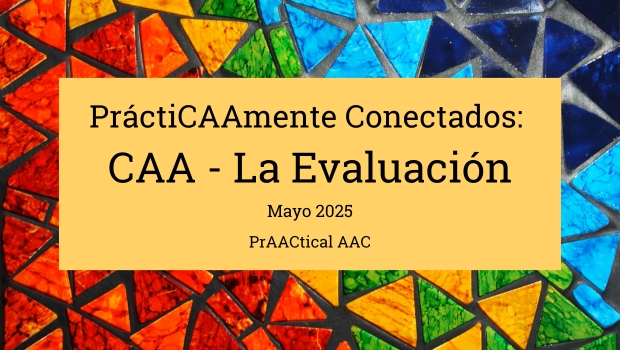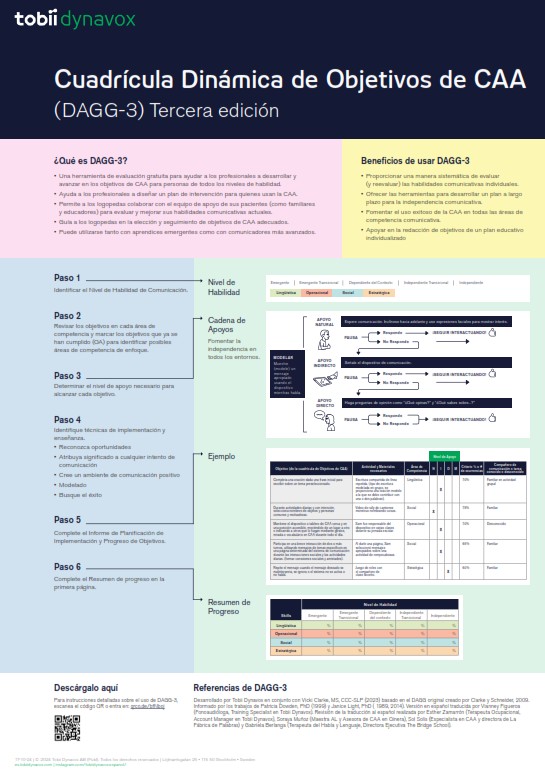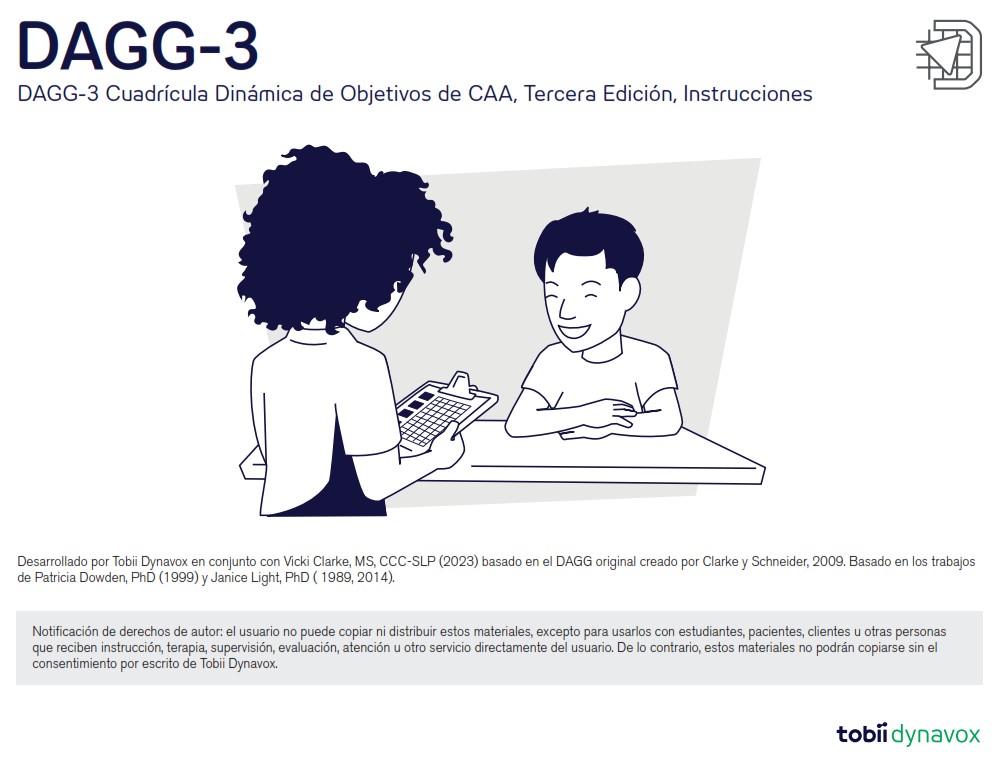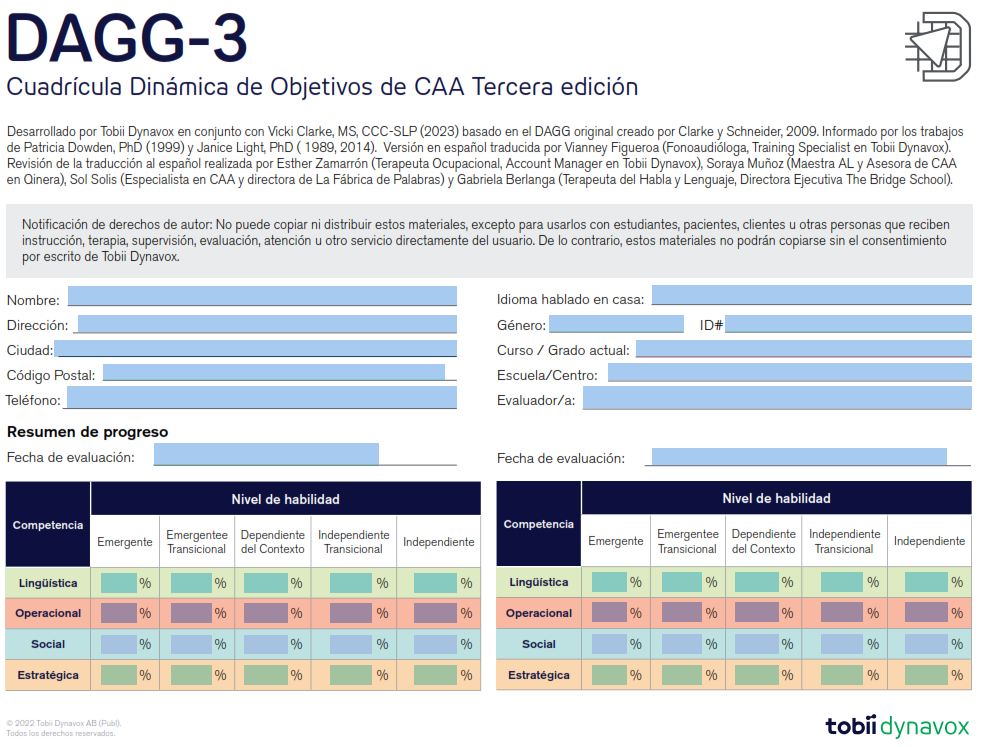PráctiCAAmente Conectados: CAA – La Evaluación

On the first Friday of each month, we publish a post in Spanish by guest author Claudia Marimón to highlight AAC work being done in Spanish-speaking countries and offer translations of material that can help families and service providers. In this month’s post, Claudia addresses a key aspect of AAC services, assessment of people with complex communication needs.
::::::::::::::::::::::::::::::::::::::::::::::::::::::::::::::::::::::::::::::::::::::::::::::::::::::::::::::::::::::::::::::::::::::::::::::::::::::::::::::::::::::::::
Este mes queremos acercar a la comunidad hispanohablante un tema clave para avanzar en una implementación efectiva de la Comunicación Aumentativa y Alternativa (CAA): la evaluación.
La evaluación en CAA no es solo un primer paso, sino un proceso fundamental para reconocer, comprender y potenciar las competencias comunicativas de personas que enfrentan desafíos en su comunicación cotidiana. Evaluar implica mirar más allá de lo evidente, observar cómo la persona ya se comunica, interpretar sus intenciones, comprender su contexto y descubrir todo el potencial que puede desarrollarse con los apoyos adecuados.
Contar con herramientas e instrumentos apropiados nos permite diseñar intervenciones personalizadas, respetuosas y significativas, que acompañen a cada persona en su camino hacia una comunicación más plena, auténtica y participativa.
Compartimos un recurso valioso: DAGG-3 Cuadrícula Dinámica de Objetivos de CAA, 3.ª Edición, traducida al español. Creada por Vicki Clarke y Holly Schneider, con el apoyo de Tobii Dynavox.
Una herramienta actualizada para evaluar, definir objetivos y seguir el progreso en el desarrollo de competencias comunicativas.
Ideal para equipos que acompañan desde una mirada inclusiva y respetuosa.
Conócela aquí en español!!
:::::::::::::::::::::::::::::::::::::::::::::::::::::::::::::::::::::::::::::::::::::::::::::::::::::::::::::
This month, we want to bring the Spanish-speaking community closer to a key topic for advancing the effective implementation of Augmentative and Alternative Communication (AAC): assessment.
Assessment in AAC is not just a first step — it is a fundamental process for recognizing, understanding, and enhancing the communicative competencies of individuals who face challenges in their daily communication. To assess is to look beyond the obvious, to observe how a person already communicates, interpret their intentions, understand their context, and uncover the full potential that can be developed with the right supports.
Having the proper tools and instruments allows us to design personalized, respectful, and meaningful interventions that accompany each person on their journey toward fuller, more authentic, and participatory communication.
We’re sharing a valuable resource: the DAGG-3 – Dynamic AAC Goals Grid, 3rd Edition, now available in Spanish!
Created by Vicki Clarke and Holly Schneider, with the support of Tobii Dynavox.
An updated tool for assessing, setting goals, and tracking progress in the development of communicative competence.
Perfect for teams working from an inclusive and respectful perspective.
Discover it in Spanish here!
:::::::::::::::::::::::::::::::::::::::::::::::::::::::::::::::::::::::::::::::::::::::::::::::::::::::::::::
Filed under: Featured Posts
This post was written by Carole Zangari


